Bill O'Malley
Reviews By Author
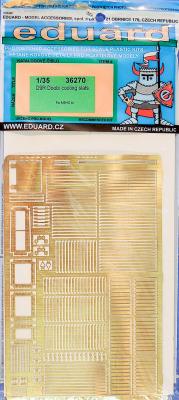
|
DR9 Doobi Cooling SlatsPublished:
This is one of three photoetch sets provided by Eduard for the Meng 1/35 scale D9R Armored Bulldozer kit. The Meng D9R kit itself has previously been reviewed [Meng D9R Review]. The Eduard Exterior set has also been reviewed [D9R Exterior Review], as well as the Eduard Interior Photoetch set [… more |
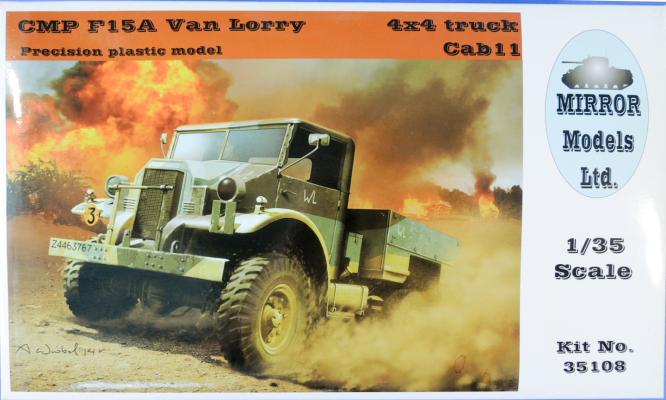
|
CMP F15A Van LorryPublished:
The 1/35 scale CMP F15A Van Lorry by Mirror Models is a challenging build due to lack of clarity in part locations, but experienced modelers can build it into a nicely detailed model. The kit comes nicely packed in a cardboard box, and each of the gray plastic sprues are individually bagged. On first glance there are many very small parts, and the detail of the molding is good. The parts have very large gateways, or sprue connections, for attaching the part to the sprue. The instructions noted that some of the gates are larger to avoid ejector pin marks, and suggests using a razor saw or scalpel instead of a sprue cutter to remove the parts. The sprue connections are wide but thin, and I didn’t break any of the parts removing when removing them from the sprue. The kit… more |
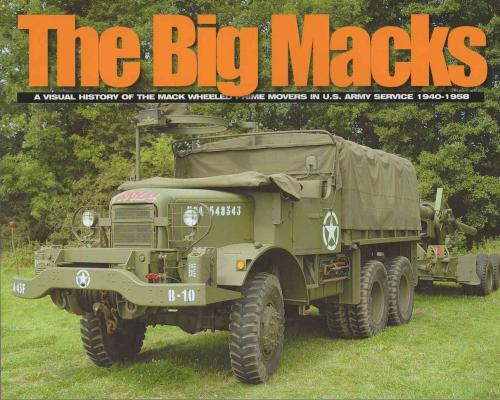
|
The Big Macks - A Visual History Of The Mack Wheeled Prime Movers In US Army Service 1940–1958Published:
The Big Macks book is part of Ampersand Publishing Company’s Visual History Series - single-subject reference books featuring a historical introduction followed by extensive black-and-white period and walk-around photographs. The book is by renowned military author David Doyle, has 112 pages with two pages of text, and the remaining pages are all photographs. There are no ads. The two pages of text is the Introduction, which provides a brief history of development of the various Mack truck models from the early NO-1, 2, 3, which were all prime movers. The introduction also describes the next two models, NO-4 and NO-5, which were wreckers rather than prime movers. The NO-4 trucks were used by the Army Air Forces as aircraft wreckers, whereas the NO-5 was intended for field… more |
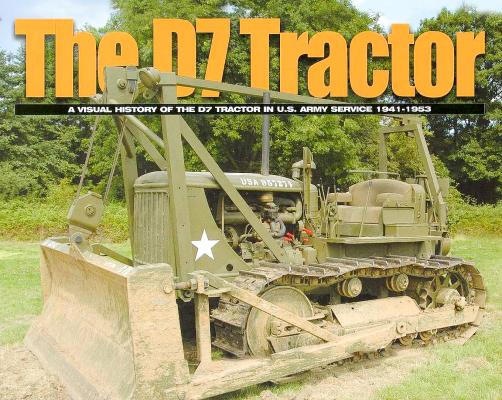
|
The D7 Tractor: A Visual History of the D7 Tractor in US Army Service 1941 - 1953Published:
The D7 Tractor: A Visual History of the D7 Tractor in US Army Service 1941– 1953 is part of Ampersand Publishing Company’s Visual History Series of single-subject reference books. Books in this series feature historical introductions followed by extensive period and walk-around photographs in black-and-white and color. The D7 Tractor, by renowned military author David Doyle, features two pages of introductory text, while the balance of its 120-page length is filled with photographs. The two-page introduction provides background on the development of the Caterpillar D7 tractor. Caterpillar was formed in 1925 by the merger of the Best Gas Tractor Company and the Holt Manufacturing Company. Holt supplied tractors to the US Army during World War I using Caterpillar as its trade… more |
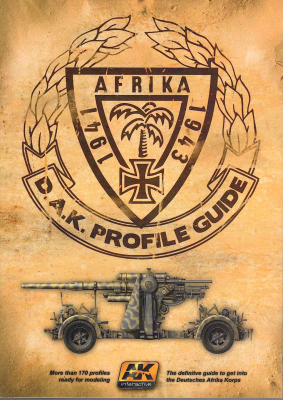
|
D.A.K. Profile GuidePublished:
This is a beautifully illustrated book showing more than 170 profiles of vehicles used by the Deutsche Afrika Korps (D.A.K.) during the North African campaign. The sections of the book include:
A Prologue briefly describes the military episodes of the Afrika Corps between 1941 and 1943. The Prologue describes how the Afrika Corpstook over for the Italian army and, despite being outnumbered and out-supplied, effectively battled the British and, later, American forces. The Prologue provides a brief backdrop for the vehicles… more |

|
Harley Davidson FLSTFB Fat Boy Lo, Part 2 - AssemblyPublished:
Part 1 of the Tamiya Fat Boy review describes the background of the Fat Boy motorcycle and the Tamiya kit contents. This Part 2 Review describes the assembly of the Tamiya Fat Boy kit. This is a fantastic kit! Not only is the Harley Davidson Fat Boy an iconic motorcycle, assembling this kit is one of the best modeling experiences I've ever had! The engineering and detail is phenomenal, the fit and finish of the parts are excellent, and the assembly, while complicated, goes together very well. The kit is a joy to build! BackgroundThe Harley Davidson Fat Boy is the latest in Tamiya’s series of 1/6 scale motorcycle kits. This is a large, multimedia kit with plastic, metal, rubber, diecast, and photoetch parts. This review also includes Tamiya’s Harley-Davidson… more |
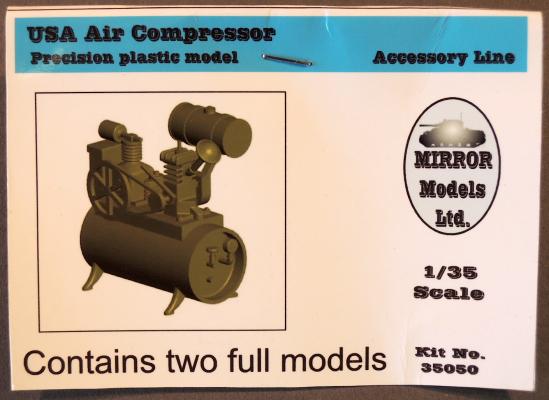
|
USA Air CompressorPublished:
The kit is a 1/35 model of a USA Kellogg Air Compressor used during and after WWII. The kit makes a nicely detailed little accessory for dioramas or vehicles. This kit is from Mirror Models, Ltd. Of Ireland, who produce plastic model kits and accessories. The compressor kit contains two full models in the package, and comes on two sprues of taupe or a gray/tan plastic. The plastic seems a little soft. Many of the parts are quite small and have very fine detail, such as the pulleys and drive belt, part K15. Some of the parts have fairly large sprue connections that require care removing them from the sprue and need some extra cleanup. The sprue connectors seem large but the actual connection points are fairly thin. In the first step, take care cleaning the sprue… more |
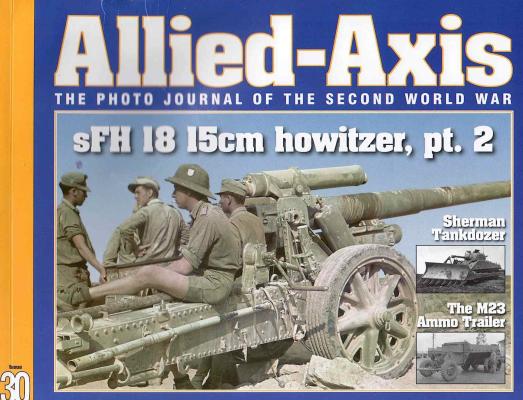
|
Allied-Axis, The Photo Journal of The Second World War, Issue 30Published:
Allied-Axis is a quarterly publication from Ampersand Publishing Group that provides photos on both Allied and Axis armor and other military vehicles. Each issue focuses on three or four different vehicle types and provides brief background information but primarily focuses on photographs of the vehicles. There are no ads, stories, or other distractions. Just lots of photos. Photographs are all in black-and-white and include production photos and in-action wartime photos. Many of the photos are from proving grounds demonstrating the capabilities and various versions of the vehicles. Each photo has a very descriptive caption describing the setting, configuration of the equipment, crewmembers in their uniforms, etc. This Issue #30 features three different vehicles: a Sherman… more |
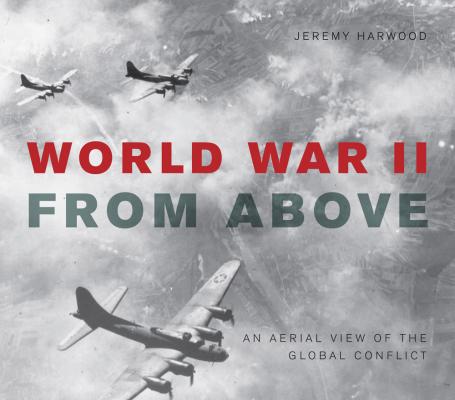
|
World War II From Above – An Aerial View of the Global ConflictPublished:
This fascinating book tells how the Allies and Axis powers developed aerial reconnaissance systems to gather accurate aerial intelligence, primarily during World War II. The book combines history with photography and provides a unique and different perspective of World War II – from above! The photographs are excellent, with descriptive captions for each photo. The text provides good descriptions of the aircraft used for reconnaissance, and the maps & diagrams illustrate many of the actions. The book is divided into five sections:
The book also includes a Bibliography/Further Reading, Index of Topics, and Photo Credits, all of… more |
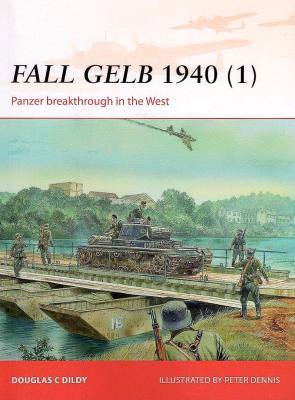
|
Fall Gelb 1940 (1): Panzer Breakthrough in the WestPublished:
Fall Gelb 1940 was a detailed German deployment order designed to launch the initial phase of Hitler's military campaign to eliminate the Western democracies from the European conflict. Osprey Publishing covers this deployment order in the new book Fall Gelb 1940 (1): Panzer Breakthrough in the West. The objective of the Fall Gelb was to defeat the largest possible forces of the Anglo-French army by an attack through Belgium and Luxembourg territory, thereby paving the way for the destruction of the military strength of the enemy. Chief architect of the Fall Gelb plan was OKH Chief of Staff, General Franz Halder. Halder’s plan included four parallel branches:
|
